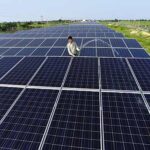Quality Crisis in the $77 billion Solar Industry
May 29, 201311 Solar Stories of the week
May 30, 2013Capital Investment in Solar Industry projected at $2.3 billion in 2013
The solar industry has been sick in the last couple of years as massive over-investment has made it economically viable activity for
many players. Continued financial strain made it impossible for companies to spend money on equipment, and they did not have the money to pay for working capital. The strain has been huge on smaller companies which have been forced to shut shop. While demand is increasing due to very low prices, the capacity is so huge that it will take another year or two for the industry to return to equilibrium.
Not surprisingly solar investment has hit a multi year low of just $3 billion in 2012 and will fall a further 30% to $2.3 billion in 2013 according to IHS. This means that the spending will fall to a level reached during 2006 when the solar industry was just starting to become a major global industry. Compared to the ~$80 billion in revenues that will be generated, this is an extremely low number reflecting that companies are just trying to survive without upgrading the equipment to gain an edge. Most of the spending is being done to catch up with old technologies or are maintenance capex. Earlier there was a huge amount of spending on new solar technologies particularly innovative thin film solar materials. Most of these capex is now gone with the investing companies like Energy Conversion Devices, Solyndra, Sulfurcell and many others going bankrupt. Other companies have stopped investment as crystalline silicon technology has become the dominant technology.
Read more about Solar Products.
IHS expects the c-Si capital spending will dominate; with cost saving approaches like direct production of wafers, quasi-mono technology, back contacts getting most of the new investments. Besides new factories will buy equipment in fast growing geographies like Latin America, Africa and SE Asia. I think it’s a great time to invest in the solar equipment survivors like GT Advanced Technologies (GTAT), Applied Material (AMAT) as they will benefit from the upside in the future. Lots of solar equipment makers have gone bankrupt due to financial problems and others have been absorbed by bigger companies. Roth and Rau was bought by Meyer Burger, while Centrotherm is in the bankruptcy court.
The low capex environment is a good one for solar producers of wafers, cells and modules as they indicate that no new capacity is being created. Even existing solar producers are selling most of their equipment or are writing them off for cents on a dollar. Companies which have the balance sheet to invest in new technologies will become leaders of the next up cycle in solar energy. Sunpower (SPWR) is in a sweet spot due to Total backing, while First Solar (FSLR) can become a leader if it gets its silicon foray right. However, these stocks have already run up a lot and are not great bargains. Other companies like Rensola (SOL) and Yingli (YGE) are going to survive and should become leaders if they manage the last phase of the downturn well.

